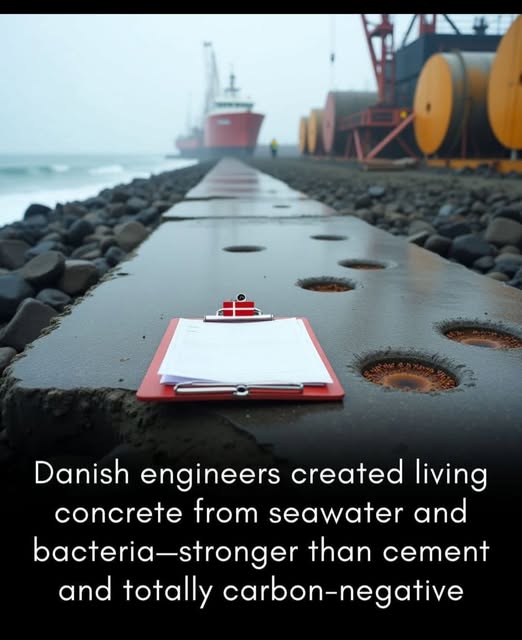
In a coastal materials lab in Denmark, engineers have created a concrete that doesn’t emit CO2 — it absorbs it. Made with marine bacteria, crushed seashells, and seawater, this living concrete hardens through biological mineralization instead of chemical heating, making it truly carbon-negative.
The process begins by mixing sand, powdered shell calcium, and a strain of calcifying bacteria. Once the mixture is poured, the bacteria activate in seawater-rich conditions, secreting enzymes that trigger calcium carbonate formation. This natural cementation strengthens over time without emitting greenhouse gases.
Unlike Portland cement — which releases over 1.5 billion tons of CO2 annually — this formula actually locks carbon into its structure. In strength tests, it exceeded conventional concrete’s load-bearing capacity after 21 days, with better crack resistance and water durability.
The raw materials are abundant and renewable. The system works best in coastal regions, where seawater and marine calcium are easy to source. It’s already being trialed in sea walls, walkways, and low-rise buildings.
With the construction industry responsible for nearly 8% of global emissions, this could be the most sustainable building material ever made.
